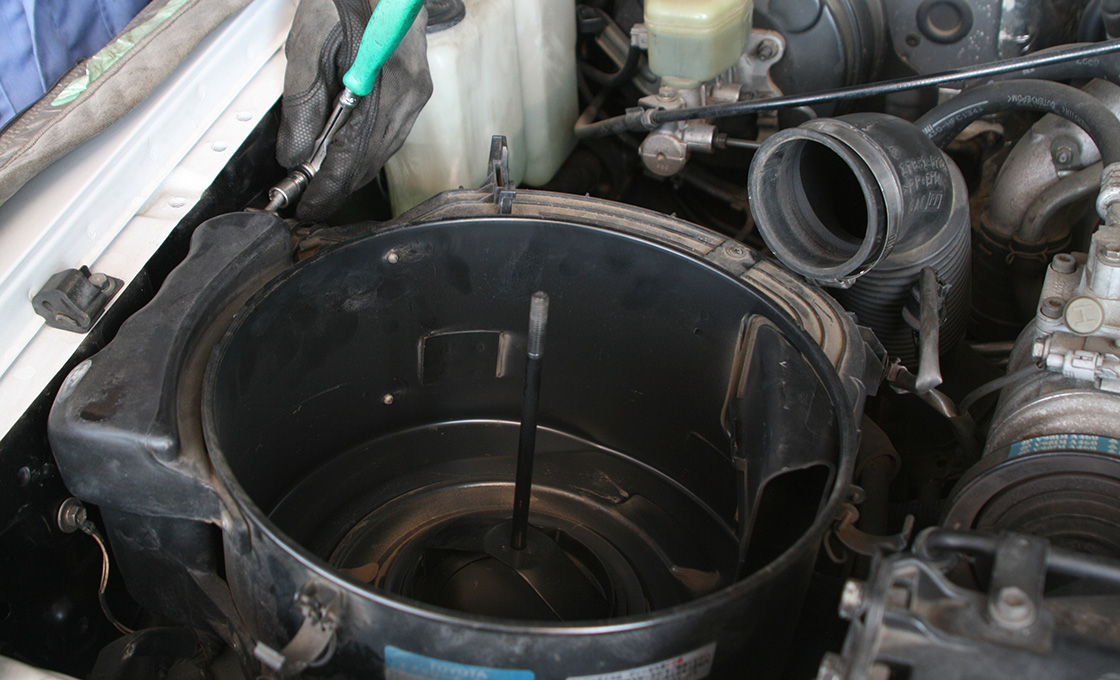How to improve the fuel efficiency of your Land Cruiser 78 Prado
The Land Cruiser 78 Prado is a wagon- (passenger car) registered vehicle sold from 1990 to 1996 and is a full-fledged cross-country 4WD that shares the chassis, drive system, and parts of its body with the base Land Cruiser 70 series van. It is only available with a diesel turbo. The previous model (LJ71/78) was equipped with a 2L-TE type 2.4-liter in-line 4-cylinder OHC, and the late model (KZJ71/78) was equipped with a 1KZ-TE type 3-liter in-line 4-cylinder OHC.
The 1KZ-TE type installed in the late model is an engine that has seen many improvements over the years to fix the emissions and power weaknesses seen in the 2L-TE type-equipped previous models. Both are electronically controlled. It has a diesel turbo with injection and is offered with a 5-speed MT and a 4-speed AT.
In addition to differences in powertrains such as engines and transmissions, fuel efficiency also varies due to differences in body weight (2-door/4-door) and trim level differences. Also, in the case of a diesel engine, it is possible to save on fuel by efficiently using the large torque mainly in the low RPM range, but there are various other ideas and improvement measures that can be used to improve fuel efficiency.
Let’s consider the fuel efficiency of the 78 Prado due to driving methods, maintenance, and service.

78 Prado fuel efficiency by the driving method
It is often said that the basics of fuel-saving driving are to avoid driving with the word “sudden”, such as sudden starts and sudden accelerations. When starting, don’t depress the accelerator all at once, and if you’re driving an MT car, try to shift up early. In the case of an AT car, do not leave the accelerator pedal depressed.
Diesel cars like the 78 Prado generate a large amount of torque in the low rev range, so it’s not efficient to pull it in each gear (increase the revs). In the case of the 78 Prado, the early model 2L-TE type is 2,400 rpm, and the late model 1KZ-TE type is 2,000 rpm. When you are cruising, efficiency is possible when you keep the accelerator steady at around this maximum RPM. When adjusting for traffic or when slowing down at a traffic light, release the accelerator early and use engine braking to improve fuel efficiency.
By the way, some drivers put the transmission in neutral on downhills or disengage the clutch to improve fuel efficiency, but this does not necessarily mean that fuel consumption will be reduced. Keep in mind that it may be more efficient to throttle off the accelerator with the gear engaged than in neutral, or idling, as it consumes less fuel.
Land Cruiser 78 Prado Fuel-Saving Tips
In some cases, some little changes can contribute surprisingly largely to saving the fuel. For example, warming your car up before you leave consumes a huge amount of fuel in a long term. Even though it is idling, there is unnecessary fuel consumption. There is an “Idling Stop System” in newer cars that already improves fuel efficiency.
If the engine is mechanical fuel injection, a proper warm-up is effective for fuel efficiency, but in the electronically controlled diesel 78 Prado, warm-up is almost unnecessary.
Warming up the engine and turning on the air conditioner or heater before you leave may not be a waste of time, but it is a waste in terms of fuel consumption, the environment, and noise. Avoid warming up your vehicle if you can.
Also, the 78 Prado has a lot of cargo space, so it is possible to load up the cargo areas with your equipment and leave it there, even when you’re not using it. When you store your camping equipment or tools in the vehicle, you add to the weight, which decreases fuel efficiency and ride performance.

78 Prado’s fuel efficiency through maintenance and service
In addition to driving habits, it is also effective to improve fuel efficiency through daily maintenance and service.
For example, the intake system of an engine is one of the parts that most affect fuel efficiency. Always remove dirt from the air cleaner (air element) and throttle chamber. If the air element is lightly soiled with dust, etc., remove it with a vacuum cleaner or compressor, and if it is heavily soiled with tar or oil, replace it. A special chemical cleaner is available on the market for dirt on the throttle chamber.
In addition, the condition of oils in the engine and drive system also has a considerable impact on fuel efficiency. Check that the engine oil, transmission oil (ATF for AT), transfer oil, and differential gear oil are not dirty and that the amount is appropriate. For example, in the winter when the oil cools and hardens, reducing the amount of engine oil within the appropriate amount, or using oil with low viscosity to reduce the loss of driving force is one way to save fuel.
It may be an extreme example, but the development department of an automobile manufacturer measures the oil level of the engine oil in millimeters and manages and adjusts the fuel consumption data. Keep in mind that even the amount of oil you use can affect fuel economy that much. In addition, tire pressure and wear also have a significant effect on fuel consumption. Tires that do not have the specified amount of air, extreme uneven wear or tires that are worn enough to show a slip sign will increase rolling resistance and worsen fuel efficiency.
In addition, it is important to select tires after knowing that oversized tires, such as those with a wider tread width or a larger outer diameter than standard tires, reduce fuel efficiency and acceleration performance.
Service and maintenance are performed to solve problems that have occurred or prevent them from occurring, but mainly they are essential for achieving the original performance. Therefore, servicing and maintenance as measures to improve fuel efficiency are not special things themselves. For the safe and comfortable driving of the 78 Prado, we definitely want to keep regular maintenance in mind.
So far, we have introduced measures to improve fuel efficiency from various aspects, but in general, you can say that these are methods for “bringing out the original fuel efficiency performance of the 78 Prado” rather than “improving fuel efficiency”.
It’s not particularly difficult to improve fuel efficiency, and if you keep it in mind daily, you can expect improvement in your efficiency, so we recommend that you start doing it today.








